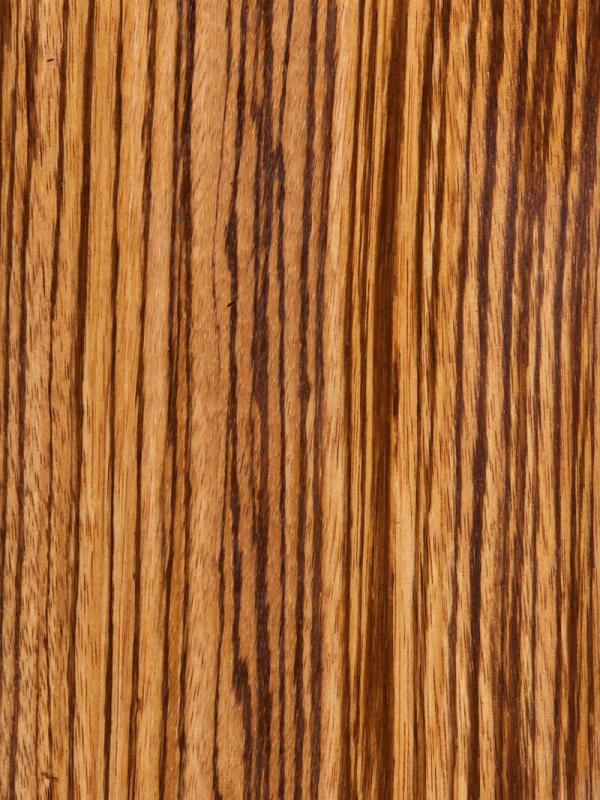
Family: Fabaceae or Leguminosae, the legume family; the cassia group.
Origin: It grows in West Africa, Mostly in Gabon and Cameroon.
Other common names: Zebrano, okwen, zingana and allen élé.
The tree: It is a tall, impressive tree, reaching a height of 150 ft. with a trunk diameter of 4 to 5 ft. and a straight, cylindrical bole that is usually relatively short over low buttresses. The amazingly thick bark might be over 12 in. thick and is always trimmed off when the tree is felled. The double, compound leaves are about 6 in. by 4 in. and the small, alternate leaflets are 0.75 in. by 0.375 in. wide.
Appearance: The heartwood is pale yellow-brown to pinkish-brown with highly contrasting, narrow, dark brown streaks. The striping pattern varies considerably. The sapwood is white, up to 4 in. wide and is distinct from the heartwood. The grain is usually interlocked or wavy producing a ribbon figure. The texture is medium to somewhat coarse and it has a high luster.
Density: Zebrawood is regarded as quite strong. Average reported specific gravity is 0.70(ovendry weight/green volume), equal to an air-dried weight of 55 pcf. Janka hardness is 1570 pounds of force.
Drying & shrinkage: It dries well without checking or cracking, but has a tendency to warp. Movement in service is rated as small. Average reported shrinkage values (green to ovendry) are 6.8% radial, 11.5% tangential and 16.5% volumetric.
Working properties: Zebrawood works fairly well although it is sometimes difficult to obtain a smooth finish when planing or shaping because of tearing of interlocking grain. It has good gluing properties, takes a good polish and turns easily. Veneers have the best qualities when quartersawn. Possible adverse reactions from the dust and wood include asthma, irritant to eyes and skin and breathing difficulty.
Durability: The heartwood is durable and highly resistant to termite attack but is not treatable with preservatives.
Uses: Because of its striking, striped effect, Zebrawood is used extensively in veneer form for cross-banding and inlays and for borders on furniture. It also has uses in flooring, general construction and turnery.
Availability: It is available in limited supply and is considered moderately expensive.